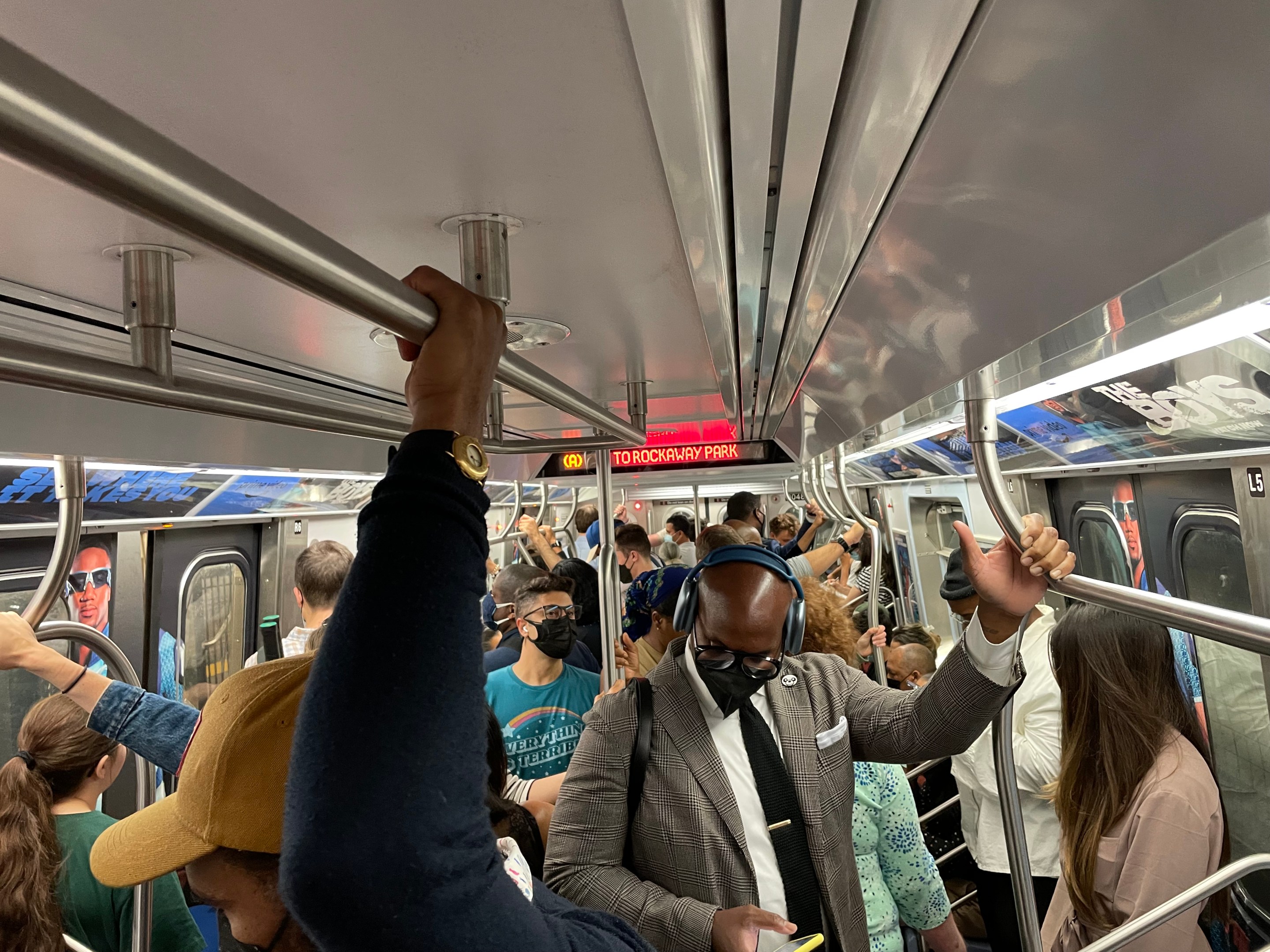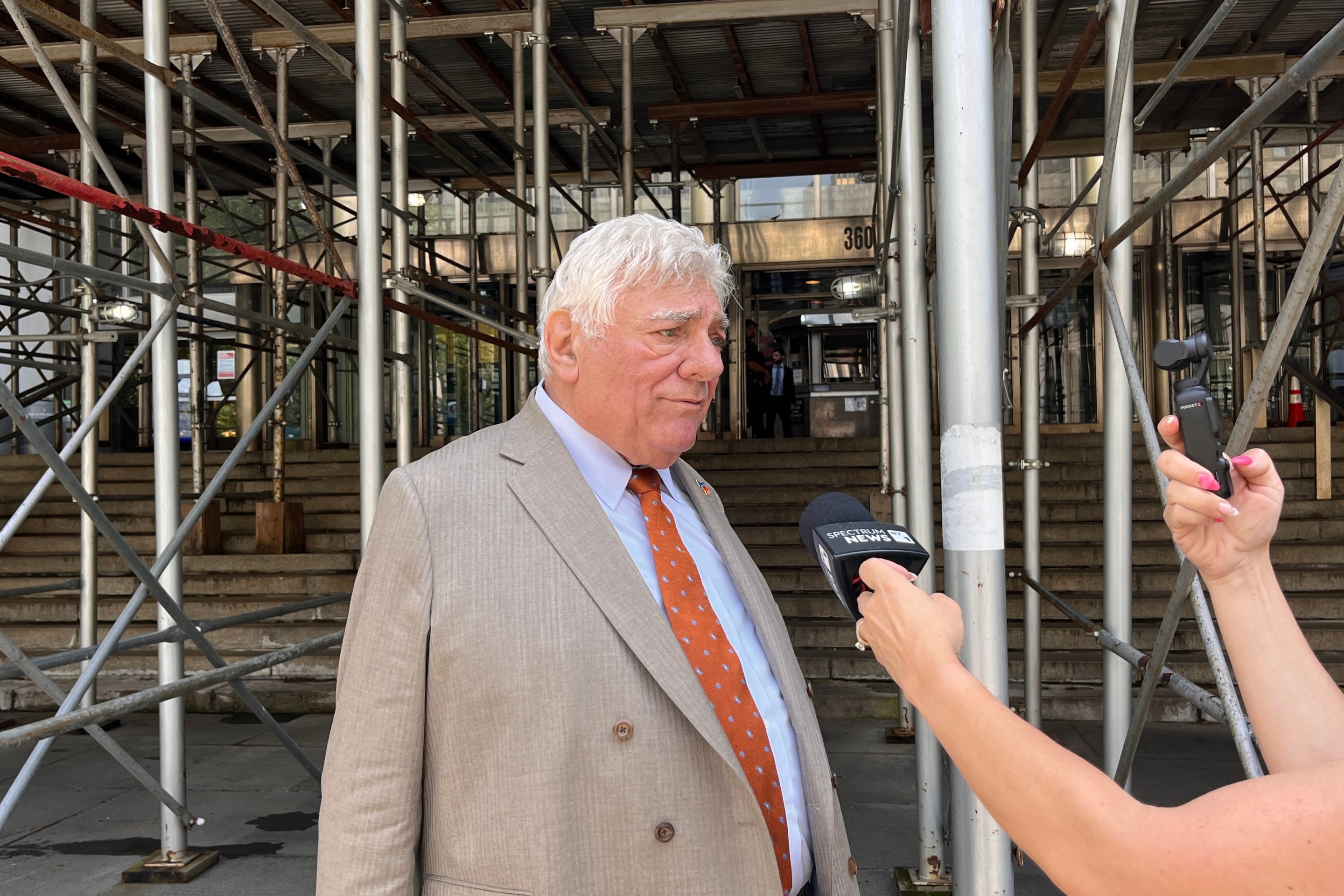Subway and commuter rail ridership is up — but straphangers are still shying away from the office on Mondays and Fridays.
The latest weekday subway ridership rose from an average of 3,404,613 rides per day in January to 3,518,008 in February to 3,680,426 per day in March this year, according to the latest MTA data, which follows the trends established last year. But the biggest increases are on Tuesdays through Thursdays, when an average of 3,647,314 riders used the subway, up from 3,399,923 riders per day on Fridays and 3,313,998 on Mondays (see chart below).

The numbers, while impressive, still represent nearly two million riders per day fewer than pre-pandemic peaks.
Similar gains through March were seen on the Long Island Rail Road and Metro-North commuter rail lines, and on a similar trajectory to subway ridership. On the LIRR, there were 183,262 riders per weekday in January and 196,219 by March, while on Metro-North, the year began with 166,820 riders per day in January and rose to 174,721 in March. Commuter rail ridership also was at its highest in the middle of the week, highlighted by the LIRR averaging 202,582 riders per day on Tuesdays through Thursdays, a number the railroad hadn't seen regularly since the pandemic began.
The ridership numbers might suggest that New York City is a three-day town — or that real estate mogul Steve Roth was right when he said, "Friday is dead forever" — but one analyst thinks the pattern will shift as trains get busier midweek.
"People are able to be in the office just two or three days a week, ... but as the subway becomes more utilized, people are going to be thinking, 'It's getting a little crowded on Tuesdays, I think I'll go in on Monday,'" said Rachel Weinberger of Regional Plan Association. "So we'll start to see that spread."
Transit ridership is trending around where the MTA has budgeted based on McKinsey's second round of ridership projections the soothsayers gave the agency last summer, projections the MTA then used to put together its budget ask of state leaders in Albany. Weinberger said that while it's too early to say the projections and ridership will continue to stay linked, the current numbers play into the current MTA budget crisis that's tied up in Albany's late budget.
"When the MTA is in the uncomfortable position of having to look at a cutting things, obviously, they're going to want to cut at times when they have the lowest ridership. But ... if we don't really have a robust 24/7 system, then you actually wind up constraining the demand rather than meeting it," she said.
It's a prediction that matches part of the pitch MTA Chairman and CEO Janno Lieber has made multiple times while selling an MTA financial rescue that fully funds the system providing pre-pandemic service even without pre-pandemic ridership revenue. In a February appearance on WBAI, Lieber said downstate employers would support a higher tax on payrolls because it would allow them to give their employees more flexibility.
"The trade association of the companies who would get hit with this extra tax is actually endorsing it," Lieber said about a key piece of Gov. Hochul's MTA finance package. "As I always say, if companies are letting their employees understandably come in one to three days a week instead of five days, but they want our service to be there frequent and reliable five days a week, we need a little help from the business community to cover that extra cost as well as from other sources."
An interesting wrinkle in terms of office worker flexibility is that even as office occupancy has stalled out this year just at or under half of what it was before the pandemic, subway and commuter rail ridership has still increased month over month. To Weinberger, it suggests that other pieces of the city's economic recovery is where the ridership increase is coming from.
"The non-office workforce is where you're seeing the ridership increases," she said. "Only about 30 percent of the jobs in the region are real desk jockey jobs — working on spreadsheets all day or whatever you're doing — which means 70 percent of jobs, the Broadway actor, the Sanitation worker, are done on site. So if only 30 percent of jobs can be done from home, and and they're back around 50 percent, basically we're missing 15 percent of the workforce, if you want to put it in those terms."






